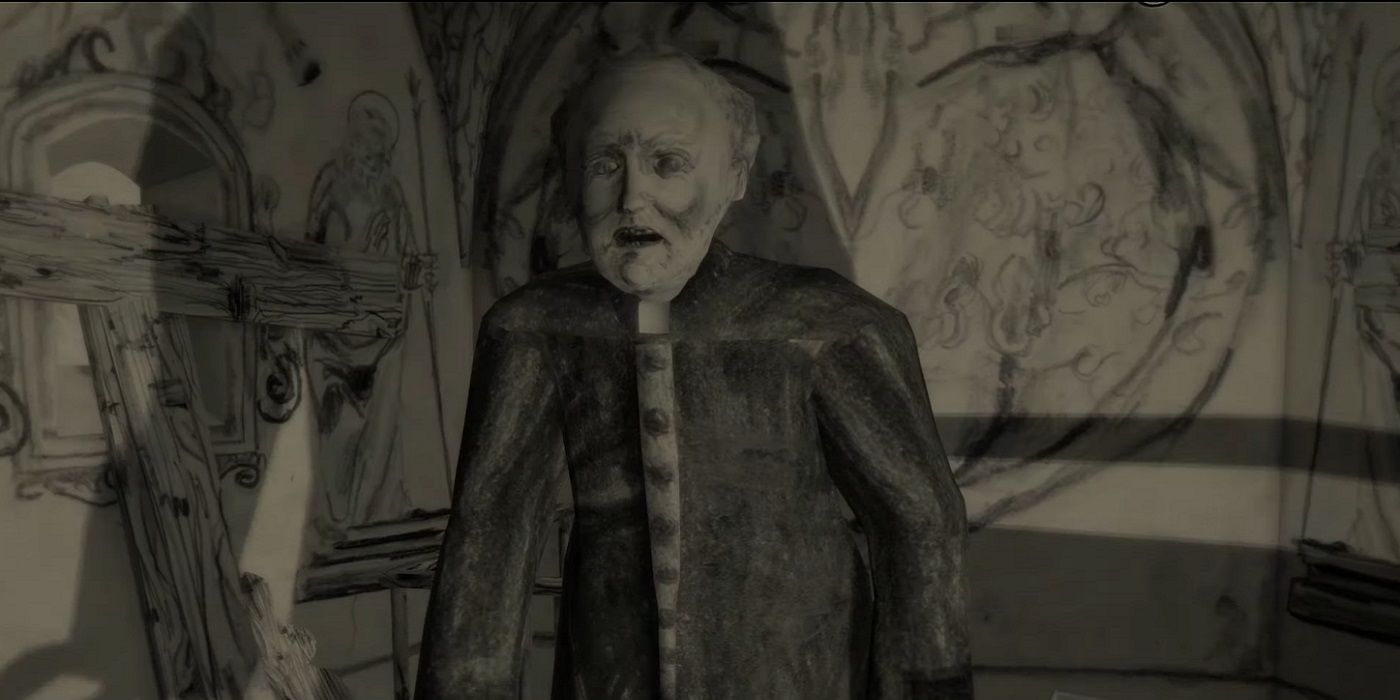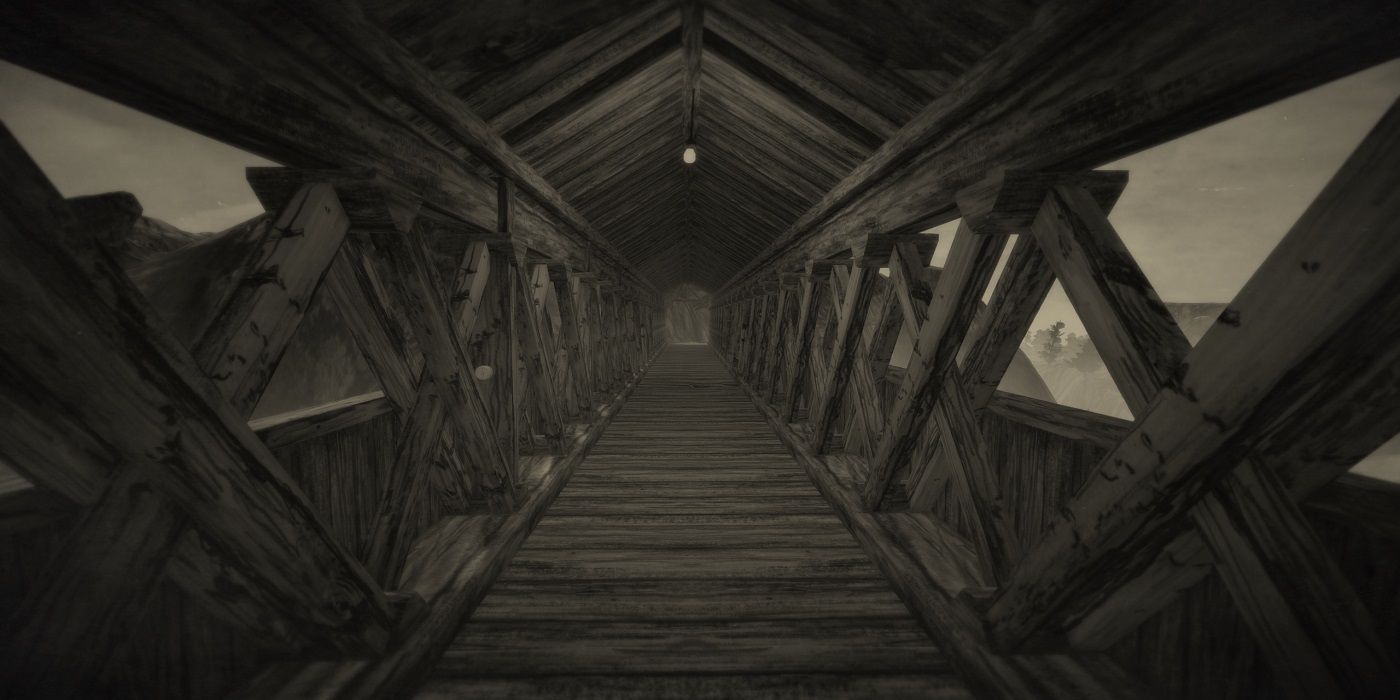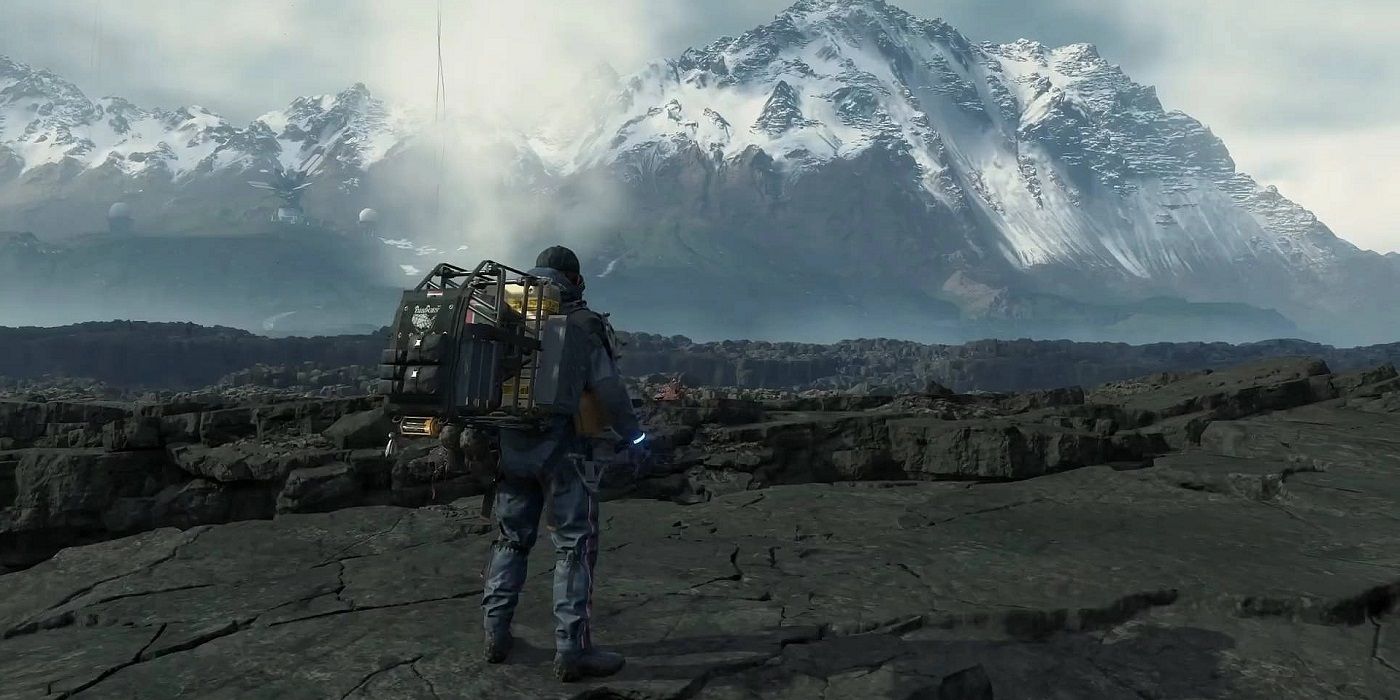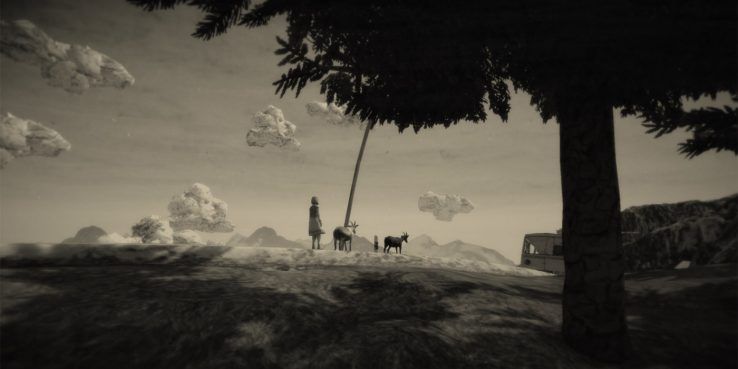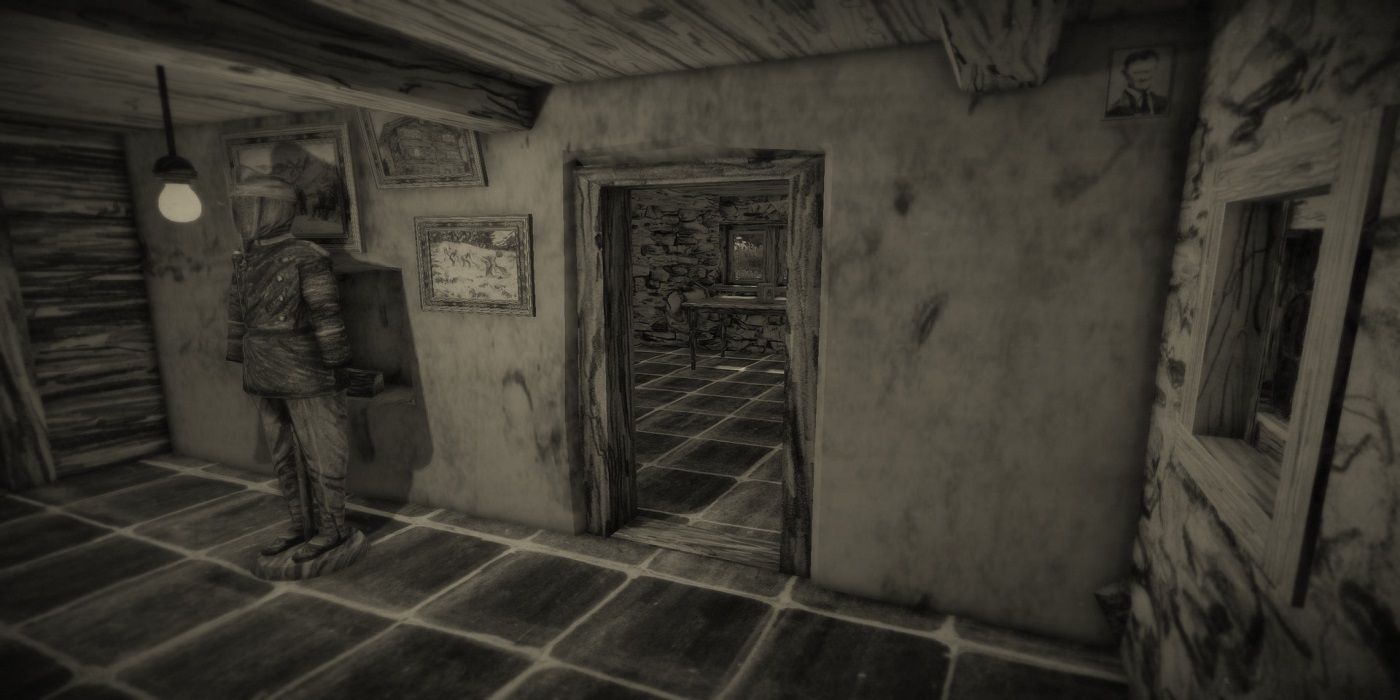Game Rant had a chance to sit down and ask a few questions to Michel Ziegler, creator of upcoming pencil-drawn horror game Mundaun. We've seen glimpses of Mundaun before, but jumped at the chance to talk directly to its creator. The game is set in the Alps, with an exceptionally unique artstyle characterized by hand-penciled textures that result in a hauntingly organic greyscale.
Ziegler discussed the process of making Mundaun, its unique art and mood, as well as his opinions on other artistic games and what he'd do if put in control of a AAA studio. Ziegler's points of pride and favorite parts of the upcoming game make us excited to see the finished product when it comes out this spring.
This game took 6 years to create. That’s a long journey for any one person’s project. How much has changed over those six years?
A whole lot! In the beginning it was less changes and more just an evolution of ideas I had. After having the initial scenario and direction, I quickly started prototyping the aesthetic and elements of gameplay. I would say during the first one or two years, things changed fast almost every day. After this period of pretty much finding out myself what the game was, it became more about iterating and adding things.
Was there any moment when you thought it might not happen? Was there a moment when you knew there was no going back and you had to finish it?
There are always moments of doubt. It has been an emotional roller coaster. There were moments of despair where I felt like I couldn’t finish what I set out to do. But yes, I would say, I reached the point of no return pretty early. On a rational level, there was never any doubt that I would finish Mundaun. I got really into it, almost getting lost in it. If every day is a rush and a drive to realize a vision, discovering new ideas or solutions to problems, that helps.
This is a very artistic game, and many games that focus on the art before anything else are made by small teams or even just individual people. Do you think there’s room in this industry for much larger-scale games to be as focused and as experimental?
I would hope so! But those seem to be far and few between. The last large-scale but very experimental game I can remember is Death Stranding. Fumito Ueda also comes to mind. The games he designs are large from a production value standpoint, but also very intimate and experimental. I might be wrong, but I feel like there is more outside of the box thinking in Japan than in the West when it comes to big budget titles. I do think there is a lot of room for more experimenting, however, and a lot of interesting stuff is being created by studios that are somewhere in between the very small indie and the AAA.
Horror games are very different from a design standpoint than any other genre. Why did you choose horror? What are the unique challenges of developing a horror game?
The folk tales that were one of the biggest sources of inspiration when I started the project defined the atmosphere of Mundaun as dark and sinister. I didn’t really set out to create a game in the horror genre at all. I don’t think in genres or their conventions much; for me, bringing something unique to the table is the most important thing. The folklore inspiration combined with the aesthetics and atmosphere however do make Mundaun quite oppressive and dark. As the protagonist is a regular person facing against some adversaries that aren’t human, the gameplay does feel like a survival horror title at times. That feeling of being in over your head to me is an important aspect of a game of this kind.
If you had a bigger budget and a larger team would you change anything about this game or keep it as-is?
Sure, there’s always things I would like to change and improve. That never stops. Mundaun is a reasonably big game with quite a lot of systems. There could always be more time and money spent on any one aspect of the game. I have many more ideas for places, characters, enemies. But those are the things that just take up so much development time. So there comes the time where one just has to say: Ok, that’s it. That’s the game. No more adding to it. I don’t know if that would be that different with a bigger or larger team.
What kinds of games would you make if you were in charge of a AAA studio?
Wow. I love games that go for a large scale world. I have always been fascinated by big open worlds ever since they first emerged. So that would be something I would try to do a take on, but have a scenario that is fresh. I have sometimes fantasized what a Mundaun could look like on a bigger scale when I looked over the valley. And I imagined that I could go or drive anywhere that my eye can see. Take a train. But the world is full of unique places, people and stories. I would try and spend more development time on fleshing the world out instead of creating the most realistic graphics or animations. Take a AAA budget and studio but don’t spend it on the usual AAA things but on things that matter more to me.
What are the benefits of working on smaller games?
I think the biggest advantage is to be able to spontaneously try things and let ideas while already prototyping. I imagine there is a lot more coordination from the very start with bigger teams and games. I don’t like to take a blank sheet of paper and write in detail what I am going to do. My way of working, no matter what I’m doing, is to try things quickly in practice. I think this freedom of letting a game grow organically can potentially yield some interesting and unorthodox games.
What is your favorite part of Mundaun?
I have favourite moments and corners in the game world. But what I think I enjoy most is just being in its world. There’s some peace and serenity to find between the more dark and dramatic moments. And I like the journey of gradually going further up the mountain and seeing the landscape change. Encountering the characters, coming across the hostile creatures.
From what we've seen of the game, it has an incredible feeling of atmosphere that’s very unique. How do you think other games should go about building atmosphere?
I think there’s many different ways to create atmosphere. For me, just a still image, an old photograph or drawing has the potential to create a very dense atmosphere. That mood is kind of what I try to emulate for Mundaun, but as an interactive game. Also just a combination of great or strange textures can unsettle. There’s many factors playing together. Music and sound are obviously key.
What are you most proud of in this game?
The process of hand-drawing the textures and the resulting aesthetic are definitely very close to my heart. I’m happy about going with my instincts, choosing a unique scenario and being very consistent with it. Going as far as having the voice overs be in Rumantsch, a language spoken by relatively few people in the Swiss alps. Overall I’m satisfied with how distinct the end product turned out.
What are you most excited for moving forward?
I’m excited to get the game into the hands of people and very curious about what the reaction will be. It’s very. very scary too. I’m the type of person that likes to hide behind a pillar at an expo if somebody walks up to the booth to play my game. So for Mundaun to be out there on all those platforms all around the world will feel overwhelming. But I’m very much looking forward to it as well.
Mundaun will launch on March 16, 2021, on PC, PS4, PS5, Switch, Xbox One, and Xbox Series X.

